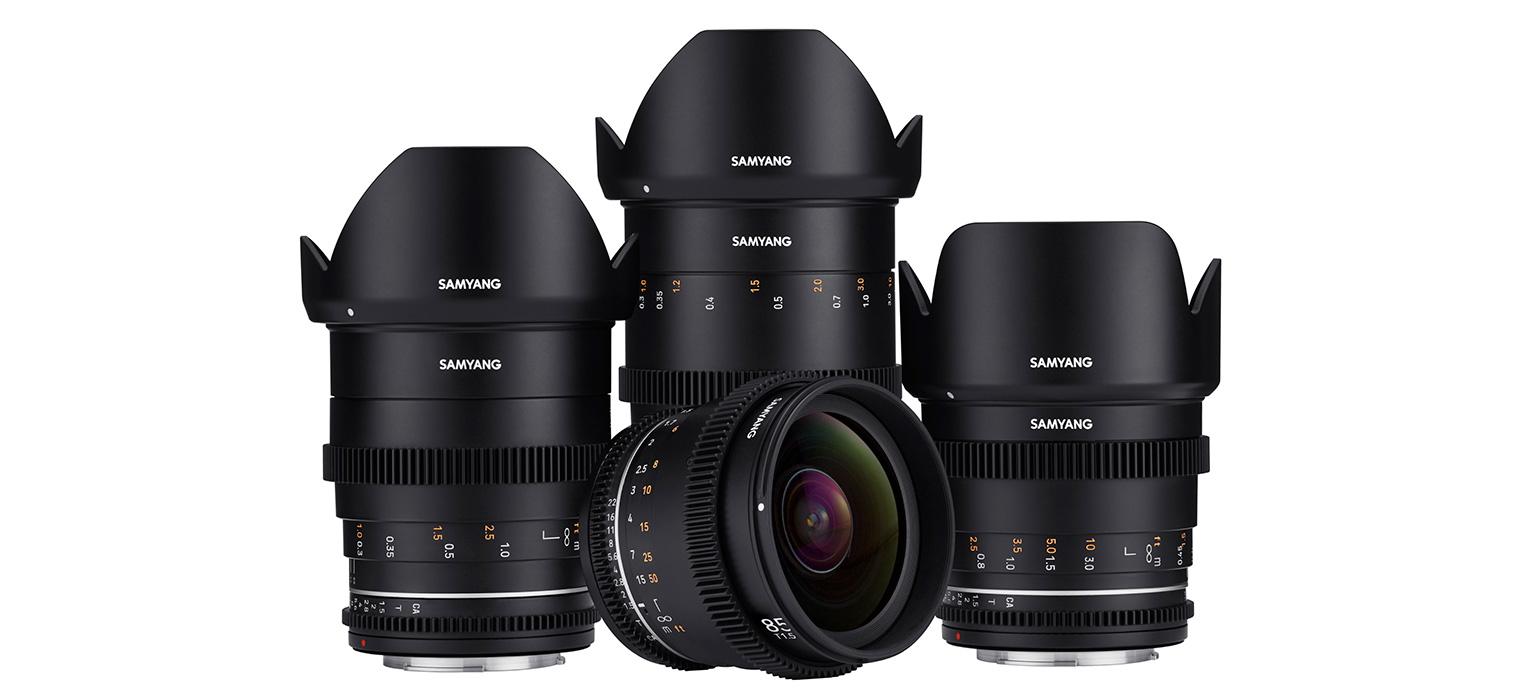
Samyang expands Cine lens lineup
Posted on Aug 14, 2020 by Pro Moviemaker
The new MK2 series initially comprises four of the most-used focal lengths: 24mm T1.5, 35mm T1.5, 50mm T1.5 and 85mm T1.5
As well as the addition of the MK2 series, the existing VDSLR series have had weather sealing, focal lengths and scaling upates. On top of this, a further model will also follow; the VDSLR 14mm T3.1 MK2, which will be launched by the first quarter of 2021.

First Cine Lens Set
Samyang pioneered the entry-point cine lens lineup when it launched the VDSLR range back in 2014. This series has helped independent film-makers and low-budget project directors to broaden their horizons. During those 6 years, Samyang has experienced the market and now introduces the updated VDSLR MK2 series, with useful new features.
Second Cine Lens Set for Professional Cinematographers
Samyang’s VDSLR range is widely owned by professional cinematographers as their second cine lens set, for personal projects or commercial test shoots. The image quality, compactness and de-clicked gear rings are able to create the cinematic look anytime.

Main features
Available in 7 camera mounts
The new VDSLR MK2 range launches with 4 focal lengths: 24mm, 35mm, 50mm and 85mm. The 14mm T3.1 will also be ready during the first quarter of 2021. These provide angles which are useful for any creative or commercial projects. All 4 lenses are available and fully compatible with 7 camera mounts: Canon EF, Sony E, Canon RF, Nikon F, Canon M, Fuji X and MFT. They are suitable for both DSLR and mirrorless systems and ready to support all types of filmmakers around the globe.
Compact and de-clicked aperture ring
The compact size of Samyang’s VDSLR lenses makes them ideal for hand-held and gimbal shooting. The VDSLR 50mm T1.5 MK2 is only 7.47cm in length and weighs just 525.8g, but it is fully-featured with de-clicked aperture and focus gear rings. The long focus throw of over 130° enables cinematographers to focus precisely and exactly on their subjects, creating a more professional feel to video footage than with autofocus photo lenses.

Full frame sensor size
The VDSLR MK2 lenses cover full frame sensors (36x24mm) and are ready for high-quality video making environment. All 4 lenses have aspherical lens elements to reduce spherical and optical aberration, producing clear and vibrant images. The 50mm model also has a hybrid aspherical lens element to maintain compact size, without compromising performance.
T1.5 for Low-Light Situations
The Samyang VDSLR MK2 series has fast T1.5 apertures across all 4 models, supporting filmmakers and allowing them to concentrate more on the scene and creativity, without having to concern themselves about image quality, even in low-light situations. Also, the shallow depth of field available blurs out the background and highlights the subject, adding depth to the story.

9 aperture blades
The new VDSLR MK2 series has been updated with 9 aperture blades and is able to deliver the latest image trends. The smooth bokeh adds a three dimensional quality and an out-of-focus effect. 18-ray starburst highlights can also be created by stopping down to small apertures.
Weather sealing
As requested by users, the MK2 series now includes a weather-sealing feature. This protects the most vulnerable gap between the lens and camera mount, to prevent dust, light rain and snow from penetrating.

Updated design with side scales
The Samyang VDSLR MK2 models have a new design; black and matte finish boosts usability and professionalism on set. They are lightweight but sturdy and fully equipped for numerous projects. The distance scales are readable from both sides, as are the focal lengths. These features support focus pullers and assistant cinematographers to operate more intuitively.

Pricing and Availability
Suggested Retail Prices for individual lenses range from £399.99 to £639.99. They will
also be available as multi-lens kits, complete with a robust, waterproof custom case. First stocks will be arriving in the UK and Ireland during early September 2020.
Read the Summer 2020 issue of Pro Moviemaker magazine here.










